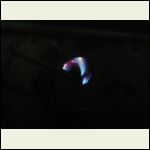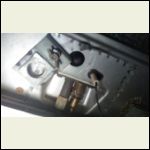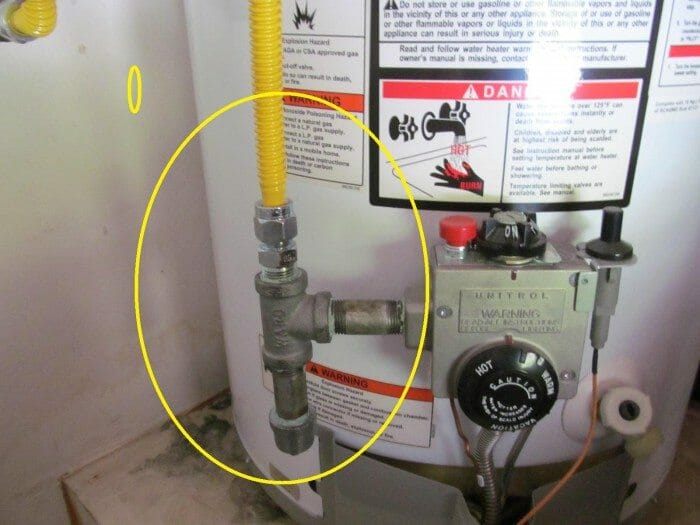|
| Author |
Message |
paulz
Member
|
# Posted: 12 Feb 2020 11:30am - Edited by: paulz
Reply
Lit the pilot on the propane wall heater at the cabin yesterday and was surprised to see more than the usual small blue flame. Instead a larger scattered flame. Do these pilot pipes burn out? Or could it be some dirt? Just want to know what I'm getting into and get a new part ($50-100 I gather) before taking it apart. Hard to get a good pic.
Then, this morning the Shurflo pump quit. Sheesh, sometimes I just want to rent a condo. But that might just be electrical.
0212200801_HDR1.jpg
| 
0211201808a_HDR.jpg
|  |  |
|
|
Nobadays
Member
|
# Posted: 12 Feb 2020 02:03pm
Reply
Had a problem last year with the pilot light on my wall heater.... flame was uneven and tended toward yellow. It wouldn't stay lit more than a few minutes. Took it apart and used air to blow it out (have been told you shouldn't stick wires and such through them), worked perfectly after putting it back in.
Clean it...Good luck!
|
|
FishHog
Member
|
# Posted: 12 Feb 2020 02:10pm
Reply
Sometimes some rust can accumulate in the pilot tube or right on the burner. It’s usually obvious once you have it in your hand. Gently clean it and it most likely will be fine
|
|
paulz
Member
|
# Posted: 13 Feb 2020 10:49am
Reply
Thanks guys, I will take it apart next trip out, looks simple enough. The heater isn't very old, shouldn't have rotted or burned out already. Hopefully just crap in the orifice.
|
|
ICC
Member
|
# Posted: 13 Feb 2020 02:58pm - Edited by: ICC
Reply
You probably do not have a " sediment trap or drip leg" in the gas piping just before the heater.
Code requires one. The general idea is to prevent clogged orifices. The installation of such a sediment trap has been shown to work, to eliminate most of this sort of a problem. Codes do make sense at times. Basically the code rules state: A sediment trap-
Must be installed as close to the inlet of the equipment as practical.
Must be installed ahead of all pounds-to-inches pressure regulators.
Must be made of a tee fitting with a capped nipple, a minimum of 3 inches in length, in the bottom opening of the run of the tee.
Must provide a 90-degree change of direction of gas flow, to help prevent sediment from flowing over the trap. (similar to an old time oil bath auto air filter that made the intake air take a sharp change of direction that directed the dirt in the air into the oil.)
The cap shall be at an elevation lower than the tee fitting.
This is an example of one that passes code---

---and this is one that fails code---

|
|
ArtifactJack
Member
|
# Posted: 13 Feb 2020 06:41pm
Reply
Try using a vaucum with the crevice tool to suck out the orifice first. I used a Q tip with alcohol to clean the one at the cabin. It doesn't take much to make them act weird. Remember that you always want the pilot flame to be a solid blue color. If the flame has any yellowing in it, the orifice needs cleaned. I always clean the thermocouple at the same time with a small piece of scotch brite pad, like you use to clean dishes......
|
|
Nobadays
Member
|
# Posted: 13 Feb 2020 07:02pm
Reply
When I blew mine out it was a combination of dust and lint.... maybe a bit of dog hair in there too! No rust or hard particles. I did turn the pressure WAY down on the compressor before blowing it out... not that it matters I guess.
|
|
mj1angier
Member
|
# Posted: 14 Feb 2020 11:45am
Reply
Spiders and bugs like to build nest in them. We have to clean them out every year and sometimes in a mild winter, between uses
|
|
|
MikeOnBear
Member
|
# Posted: 18 Feb 2020 12:25pm
Reply
One thing I used to do was add the soft brush attachment to the end of the vacuum hose. Then, gently vac the pilot hole and bricks of our propane heaters. Did it before each winter to clean out the dust and debris that settled during the summer. I have no idea if this is a recommended cleaning method by the manufacturers.
|
|
Aklogcabin
Member
|
# Posted: 19 Feb 2020 09:05am
Reply
Mike thats a great way to clean them. Mostly it makes you also look at them. Having the pilot working correctly is instrumental in the thermocouple, the little bulb, operating correctly. As it is responsible for opening and closing the gas valve. Good to have clear communications between these two.
Be safe all.
|
|
paulz
Member
|
# Posted: 19 Feb 2020 03:20pm
Reply
Finally back at the cabin today, had to put a new engine in my truck. Whew, glad that's done. So you guys were all right, I pulled the pilot and a bunch of carbon came rattling out. Blew the hole out, back to normal, heater's on now. Much easier than the truck was.
And I do need that sediment drop ICC mentioned.
Thanks!
|
|
paulz
Member
|
# Posted: 4 Mar 2020 11:58am
Reply
My heater's working well now. I've been adjusting the pilot screw. Has to be enough to keep the thermocouple hot to turn the burner on, right? When I do that the pilot flame is not solid blue, yellow for the top 1/4. Ok?
|
|
ICC
Member
|
# Posted: 4 Mar 2020 02:21pm
Reply
look here http://www.appliance411.com/faq/gas_range_flames.shtml
|
|
ArtifactJack
Member
|
# Posted: 9 Mar 2020 10:47am
Reply
Sounds like the thermocouple is dirty with carbon. The pilot should never need adjusted for the flame to be longer, to heat the thermocouple, these are factory set. Yellow in the flame indicates you are getting a bad mixture of air/propane by making the flame longer. You don't need a trap for propane, that is for natural gas. I have installed both systems. Use a scotch brite pad to clean the thermocouple. It will not hurt the element.
|
|
|

